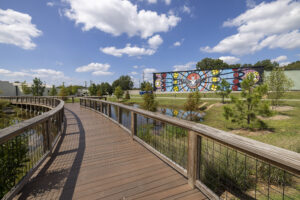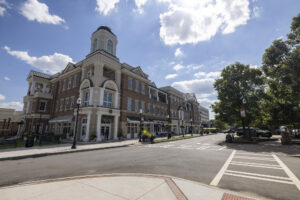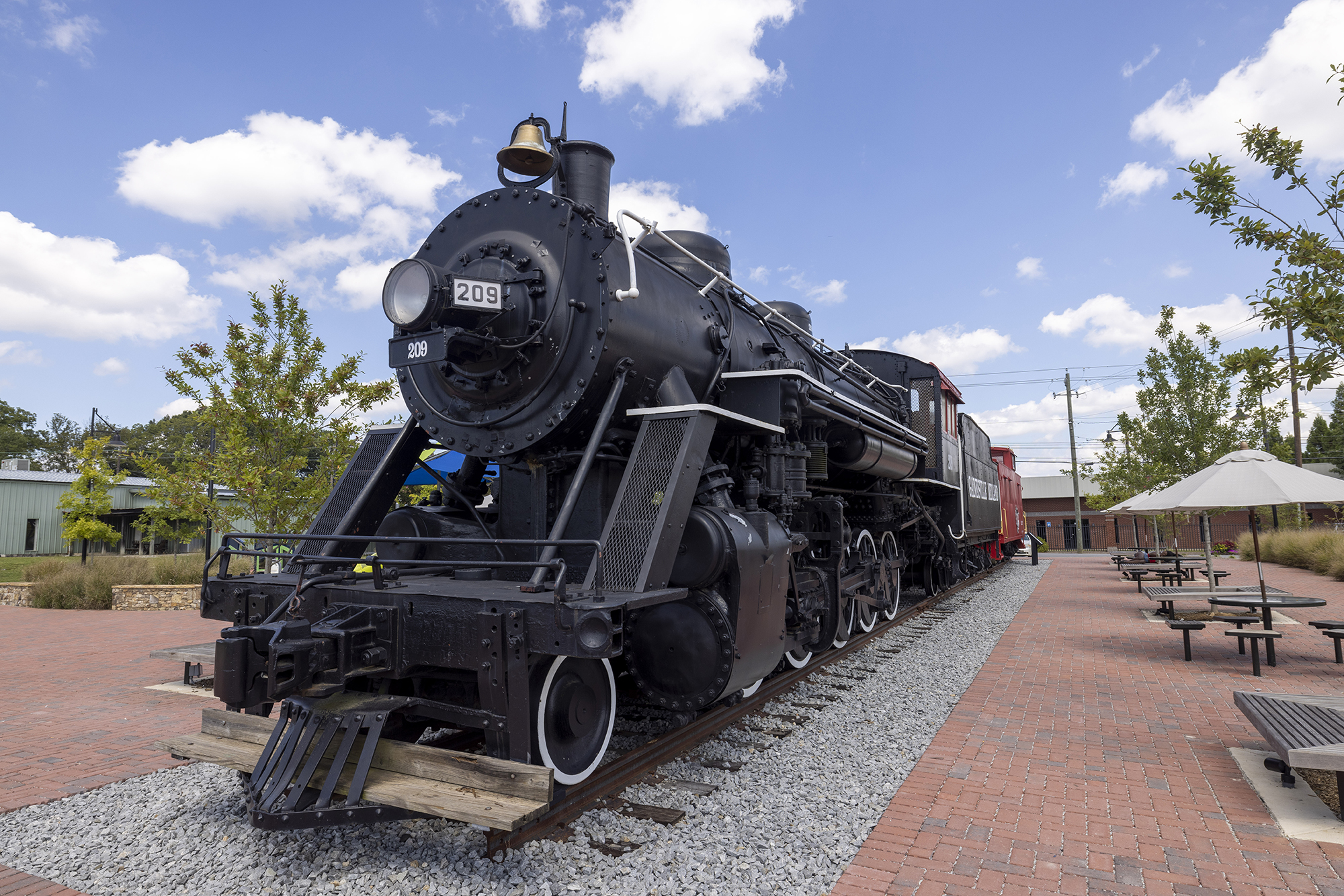In 2015, Gainesville residents and business owners were asked what could be done to improve their downtown area. They had some thoughts.
“Business needs to stay in Gainesville.”
“Increase downtown housing.”
“More variety.”
Gainesville city officials took the challenge head-on. Working alongside the University of Georgia’s Carl Vinson Institute of Government, they developed a plan that has helped make Gainesville one of the fastest-growing metropolitan areas in the nation.
The Institute of Government, a unit of UGA Public Service and Outreach, created the Downtown Renaissance Strategic Visioning and Planning (RSVP) Process as a way to reimagine a city’s potential. For Gainesville, a city of 43,000 an hour northwest of Athens, that meant replacing empty train yards with lush green spaces, upgrading rundown buildings to house thriving businesses, and turning an underused bridge into a pathway for economic development.
“Downtowns are the heart and soul of our communities,” says Danny Bivins, who co-developed and manages RSVP, which is celebrating its 10th year in 2023. Gainesville was one of the program’s first partners. “Making downtowns more inviting, lively, and functional is part of the formula for success in 21st-century economic development.”
Investing in Gainesville
For more than a decade, the infamous “Bridge to Nowhere” has been a common topic of conversation for Gainesville residents. Built in 2012, the charming white bridge crosses over Jesse Jewell Parkway, leading pedestrians to a beautifully green but empty lot.
The RSVP suggested building a mixed-use residential community on the lot where residents could also enjoy restaurants and retail services.
“The RSVP is a roadmap that we can use to show developers what we want to provide for our community. It doesn’t have to give us the end result, but it offers a vision of what something can be,” says Gainesville Mayor Sam Couvillon AB ’94. Couvillon; his wife, Margie AB ’92; and their two daughters have lived in Gainesville for 14 years, and he was elected mayor in 2022.

Part of what makes the plan so effective is its highly visual components. With a planning document that doubles as a coffee table book, the RSVP attracted developers from across the state, including Terwilliger Pappas who developed the “nowhere” at the end of the bridge into a mutimillion-dollar apartment complex, complete with high-end restaurants and shopping.
More developers are getting in on Gainesville’s revitalization. Some are even returning to support the economic growth of their hometown.
For instance, investments from Hall County native Doug Ivester BBA ’69, retired chairman of the board and CEO of the Coca-Cola Co., range from the award-winning Gainesville Renaissance Building that is centerpiece of downtown to the naming of the Kay and Douglas Ivester Visitor Center and Amphitheatre at the Atlanta Botanical Garden, Gainesville. Private developers have invested more than $350 million in downtown Gainesville since the RSVP was created. Couvillon says that this is what makes Gainesville so special.
“When you have a need, someone will step up and help provide for that need. That tells you a lot about the people here,” he says.
Going Green
Jessica Tullar AB ’99, MPA ’05, Gainesville’s housing and special projects manager and staff project manager for the RSVP, has worked for the city of Gainesville for more than 20 years. She has been a vital part of its efforts to create green spaces, what the RSVP described as one of the city’s “biggest assets.”
The “Rails to Trails” initiative, which branches off the Midland Greenway, is one of the more ambitious of these projects and includes the transformation of a large train yard that was once stocked with storage and abandoned vehicles.

The city moved a train engine to the railroad “wye” south of the train yard and created Engine 209 Park, a themed greenspace with picnic tables, a playground, and a bridge with a landing and piece of public art of a soaring osprey that makes visitors feel as though they are flying over the train.
“We don’t want to ever be just a concrete jungle,” says Couvillon.
NoFo Brew Co. has already taken advantage of the new development to invest $4 million in property off Gainesville’s Midland Greenway, which is part of the countrywide Highlands to Island Trail network, another up-and-coming green space. In the last six years Gainesville has received more than $300 million in private investment in the downtown and midland areas that were discussed in the RSVP. Of that $300 million, more than one-third is on property fronting or adjacent to the Midland Greenway.
A Team Effort
The key to success with the RSVP program has been collaboration. From committee members to teachers and entrepreneurs, the program relies on a foundation of community input.

“We were very intentional in hearing from different voices in Gainesville,” Tullar said. “We had breakfast with Gainesville Middle School students and lunch with high school students. We talked with college students, retirees, business owners, and council members. The community really embraced this as its vision and pushed through to make it happen.”
Now, the RSVP is a staple for Gainesville’s ongoing efforts to increase economic development, walkability, and quality of life.
“Even today we’re actively pursuing the vision put forth in the 2015 plan,” Tullar says. “We give it to developers who meet with us, and we’re using it to take Gainesville into the future.”



